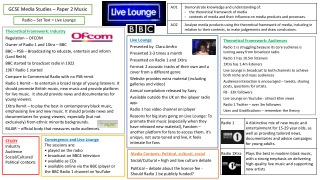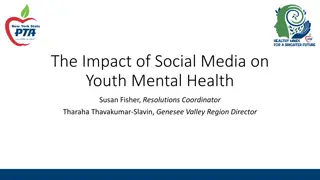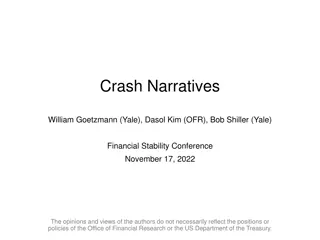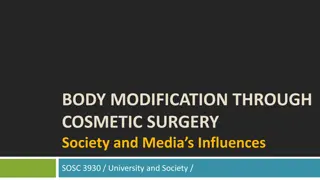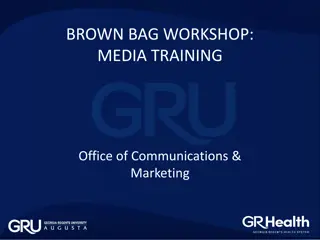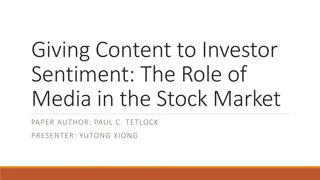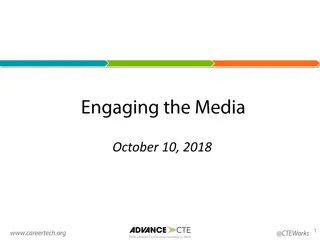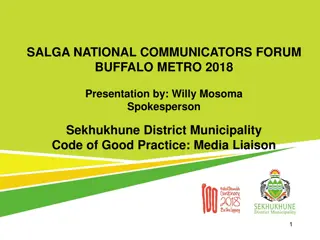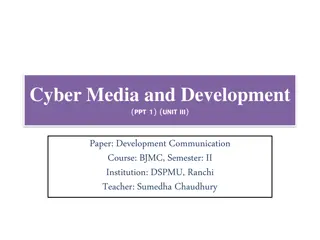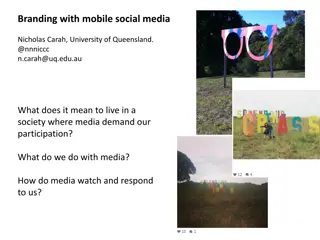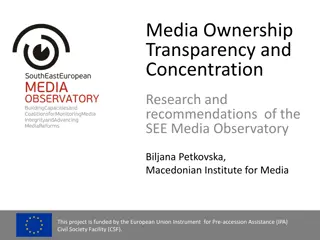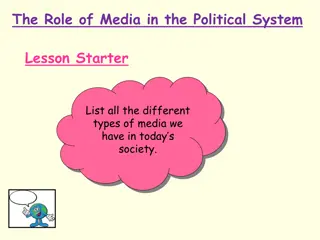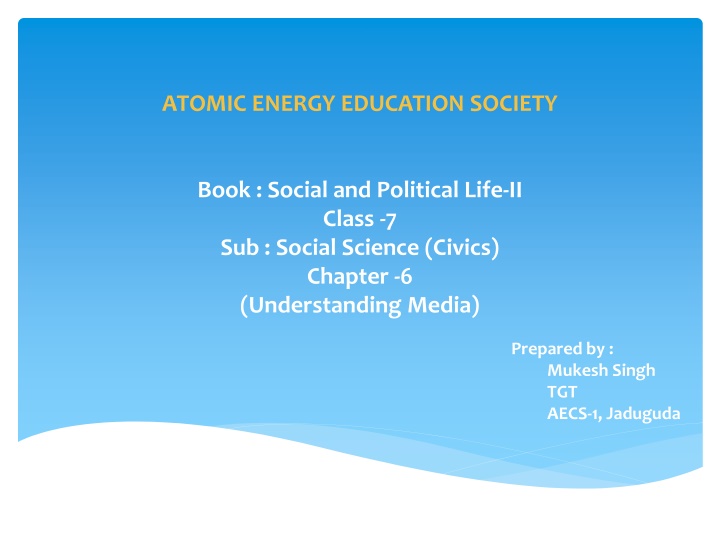
Influence of TV on Society - Understanding Media Impact
In many homes, TV shapes our worldviews through programs like soap operas, game shows, news, and more. However, it offers a limited perspective, setting agendas and influencing behaviors. Local media initiatives empower ordinary voices, highlighting community issues often overlooked by mainstream channels.
Download Presentation

Please find below an Image/Link to download the presentation.
The content on the website is provided AS IS for your information and personal use only. It may not be sold, licensed, or shared on other websites without obtaining consent from the author. If you encounter any issues during the download, it is possible that the publisher has removed the file from their server.
You are allowed to download the files provided on this website for personal or commercial use, subject to the condition that they are used lawfully. All files are the property of their respective owners.
The content on the website is provided AS IS for your information and personal use only. It may not be sold, licensed, or shared on other websites without obtaining consent from the author.
E N D
Presentation Transcript
ATOMIC ENERGY EDUCATION SOCIETY Book : Social and Political Life-II Class -7 Sub : Social Science (Civics) Chapter -6 (Understanding Media) Prepared by : Mukesh Singh TGT AECS-1, Jaduguda
What does TV do to us and what can we do with TV? Inmany of our homes, TV is on a lot of the time. In many ways, a lot of ourimpressions about the world around us are formed by what we see on TV: it is likea window on the world . How do you think it influences us? TV has different typesof programmes, soap operas, like Saas Bhi Kabhi Bahu Thi, game shows, like KaunBanega Crorepati, reality TV shows like Big Boss, news, sports and cartoons.Before, in between and after each programme are advertisements. Since TV timecosts so much oney, only those programmes that can attract the maximumnumber of viewers are shown. Can you think of what such programmes might be?Think of what are the kinds of things that TV shows and what it does not. Does itshow us more about the lives of the rich or the poor?We need to think about whatTV does to us, how it shapes our views of the world, our beliefs,attitudes andvalues. We need to realise that it gives us a partial view of the world. While weenjoy our favourite programmes, we should always be aware of the large excitingworld beyond our TV screens. There is so much happening out there that TVignores. A world beyond film stars, celebrities and rich lifestyles, a world that all ofus need to reach out to and respond to in various ways. We need to be activeviewers, who question whatever we see and hear, while we may enjoy it too!
Setting Agenda Because people think and behave according to what information comes from the media, media companies, in choosing which news to share and which to avoid, set the agenda for the nation. To make more money or to have more power, the media often focuses on 'interesting' stories that will attract more people, and it often report in a biased way. It is important that all media be independent, and reports and stories in the media should be balanced (they should cover all aspects of democratically useful stories).
Local media Local mediaRecognising that the media will not be interested in covering small issues that involve ordinary people and their daily lives, severallocal groups have come forward to start their own media. Severalpeople use community radio to tell farmers about the prices ofdifferent crops and advise them on the use of seeds andfertilisers.Others make documentary films with fairly cheap and easily available video cameras on real-life conditions faced bydifferent poor communities, and, at times, have even given thepoor these video cameras to make films on their own lives.Anotherexample is a newspaper called Khabar Lahriya which is a fortnightlythat is run by eight Dalit women in Chitrakoot district in UttarPradesh. Written in the local language,Bundeli, this eight-pagenewspaper reports on Dalit issues and cases of violence againstwomen and political corruption. The newspaper reaches farmers,shopkeepers, panchayatmembers, school teachers and women whohave recently learnt to read and write.
Discuss and Debate How much 'freedom' exists in today's media? How does media influence individual behaviour in the society? The Business of Media Censorship Importance of Media in Our Daily Lives Effects of Different Types of TV Programmes and Channels on Children Under the Age of Ten Agree or Disagree Everything in TV, radio, Internet, and local and international events is a part of the media. Newspaper, radio, and magazines come under the category of print media. Radio, TV, newspapers, the Internet, and several other forms of communication can be collectively termed as media. The media should be balanced and independent. TV, newspaper, radio, and magazines influence our behavior and activities. Television mostly shows a partial view of the world. The Internet is the oldest form of media and it is losing importance now. Changes in technology reduces the reach and quality of media. Television images travel huge distances through satellites and cables. The technology used in media modern is very cheap. Advertisements are to draw our attention to various products. To name a product is debranding. Products are given a particular name and logo to differentiate it from other products. We see advertisements on television only.

